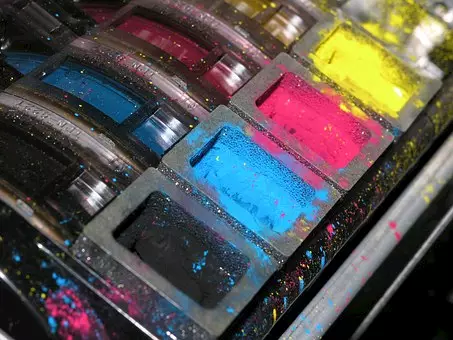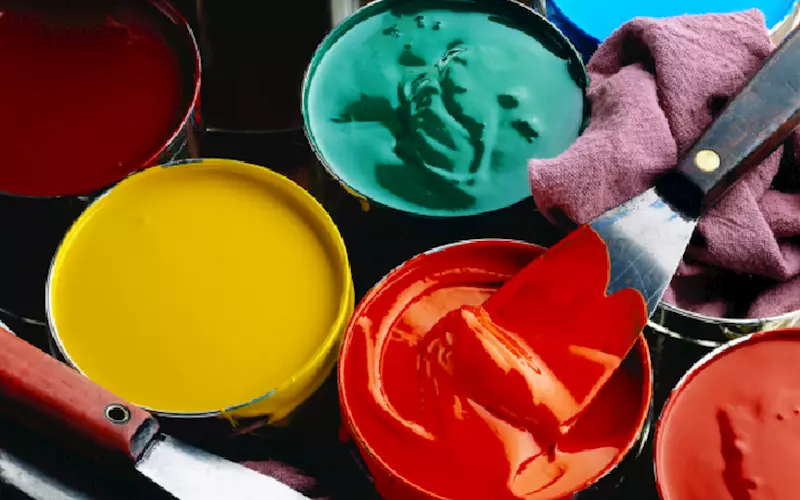Shakespeare has some good ink-saving advise - The Noel D'Cunha Sunday Column
The ink may not be a Virat Kohli in the pressroom, but ink is the thing that helps the man on the shopfloor win a match. In this day and age of cost-cutting and being prudent, Noel D'cunha suggests a few tips that can help you cut your ink spend.
The Sunday Column, we discuss how lower-cost inks are not the only option, there are simple ways to reduce expenditure in this area
20 Oct 2019 | By Noel D'Cunha
Love all, trust a few, do wrong to none
So says Shakespeare in All’s Well That Ends Well. I suggest you deploy this as a mantra with your ink suppliers. All suppliers will approach you; all of them have super-duper inks (and other consumables); some will offer great Diwali discounts. Therefore love all suppliers, trust a few, do wrong to none.
Question: Why, so?
Answer: Most printers have unique needs that can only be fulfilled by working with a range of specialist suppliers.
I know many companies that buy all of their inks, blankets and pressroom chemistry from the same manufacturer. They should be careful. Always have two or three different suppliers so we can go backwards and forwards saying ‘I’d rather use you, but so-and-so has been sniffing around here again and I can’t help it if he’s throwing lower prices at me.
PS: Then you can negotiate. In other words, suit the supplier to the product, and the product to a price.
All that glitters is not gold
This Shakespeare quote from the Merchant of Venice is particularly true about long-term contracts. Of course it helps suppliers who are keen that printers don't stray to rival suppliers. It is great insurance for a salesman. But you don't need to commit to a 12-month or 24-month contract. But you can give your supplier a forecast of the volumes likely to be ordered and perhaps issuing a purchase order can be good alternatives.
Many printers order 12 sets of ink at one go. They issue a purchase order. But they request delivery, two or four sets at one go. And then, they pay as they go along.
As Shakespeare says in Hamlet, suit the action to the word, the word to the action. In other words, build a trustworthy relationship with a supplier based on your ops. Plus you can negotiate prices as time goes on.
A lot of suppliers will give you a better price based on a forecast. With a decent MIS, you can predict how much ink you use; and then you can order.
PS: If you are still daunted? Then instead of 24 months and 36 month contracts; you can opt for a three-month contract.
No legacy is so rich as honesty
Mariana demands this in All’s Well That Ends Well. You should also demand the same.
Many suppliers will offer a good discount when you purchase ink in large volumes. But not all the 25,000 print and packaging firms PrintWeek has written about in the past 11 years require large volumes.
The crux of the problem, as most of you know is, is ink shelf-life. Most ink lasts 12 to 24 months in tins. This is why most of the newspaper biggies seek bulking systems where ink is delivered from a supplier in 200kg drums and then decanted into pumps to stop the ink skinning-over. This kind of system can also help printers save on staffing costs as people aren’t topping up ink levels as regularly.
These bulking systems are expensive. Therefore, only those with large volumes can accrue the benefits. Which means this system is most suitable for those heatset, flexo and screen printers, who work with four colours, rather than sheetfed printers deploying spot colours.
Out, damned spot! Out, I say!
Lady Macbeth hisses this line in Macbeth. Spot colours are equally terrifying for those who print lots of spot colours.
The last thing you want to do is alienate your ink master so much that the "ink dada" is screaming at you to stop messing about with their in-house mixing process. But as any good ink-maker will tell you; mixing spot colours in-house, printers can avoid over-ordering.
Printers waste a huge amount of ink. There are two ways to prevent waste. 1). An ink dispensing system; 2). A smaller dispensing system
But other than systems it is common sense. A lot of in-house ink mixing depends on which shades a printer frequently uses. Certain spot colours are more difficult to reproduce batch to batch. For instance, with spot colour greys subtle changes can be easily noticed, so it may be more cost-effective to get these from a supplier rather than risk QC issues, waste sheets or even job rejection.
Conclusion: The wheel comes full circle
In King Lear, this quote is about Edmund’s bad deeds which return to haunt him. But we can use it to talk about machine maintenance
Printers should not underestimate how thirsty a poorly maintained press might be. Poor roller settings or worn rollers will affect how the ink transfers down the roller chain onto the blanket and then to the sheet and therefore will mean more ink is being carried on the rollers in order to achieve the correct density. The same goes for washes and the wash-up programmes on the machine; if a good quality wash is not used and the programme is not correct, then this can lead to greasy rollers that will then affect ink transfer.
PS: Please take care of your press as much as you take care of those hot wheels.

How cloud-based systems help ink optimisation
The New Indian Express Group started its migration to cloud-based systems with – Ink Optimization software from Cadgraf Digitals – that saves printing ink on presses. General ink optimisation software has been with the company for some time, but most printing plants do not get the full value out of it. Ink optimisation software uses Gray Component Replacement (GCR) to change the separation of the image. The software will take colour (CMY) from the file, and increase the black channel (K) without affecting the quality of images. GCR software also typically adjusts the total ink limit (TAC).
Please note: The software is a heavy-resource hungry desktop-based application and the New Indian Express Group needs to procure individual site licenses to use this in every location.
Benefits of the software
1. Saves a significant amount of colour ink. Expensive CMY inks are replaced by a cheaper K ink.
2. Show through problem on printed pages is eliminated or minimised due to better ink control.
3. Eliminates ink set-off by use of less ink on the newsprint. Faster ink drying time is achieved due to the reduced amount of ink.
4. Due to an increase in the usage of black ink, better registration and higher printing stability is ensured.
5. Improved print quality and uniform colour reproduction. Better and more stable grey balance.
6. Flooding of ink on pages is not possible.
7. 220 ink trapping level (suitable for 42gsm and 45gsm newsprint) is set for the entire page by using this software.
8. Work in progress: profiles with 200 and 180 ink trapping levels in order to opt for much lower gsm newsprint.
9. 15% - 20% savings on colour ink. In the cloud-based solution, we need to copy the PDF version of the colour pages in IN – HOT folder in the cloud and within a minute the processed page will be available in OUT – HOT folder.
Please note: Ink optimisation software: Companies like GMG and Alwan also offer ink optimisation software. To put it simply, these systems ensure ink isn’t laid down unnecessarily. And so any print firm can make a saving; especially those who will risk compromising colour integrity by turning up the ink saving settings on their workflow package.














 See All
See All